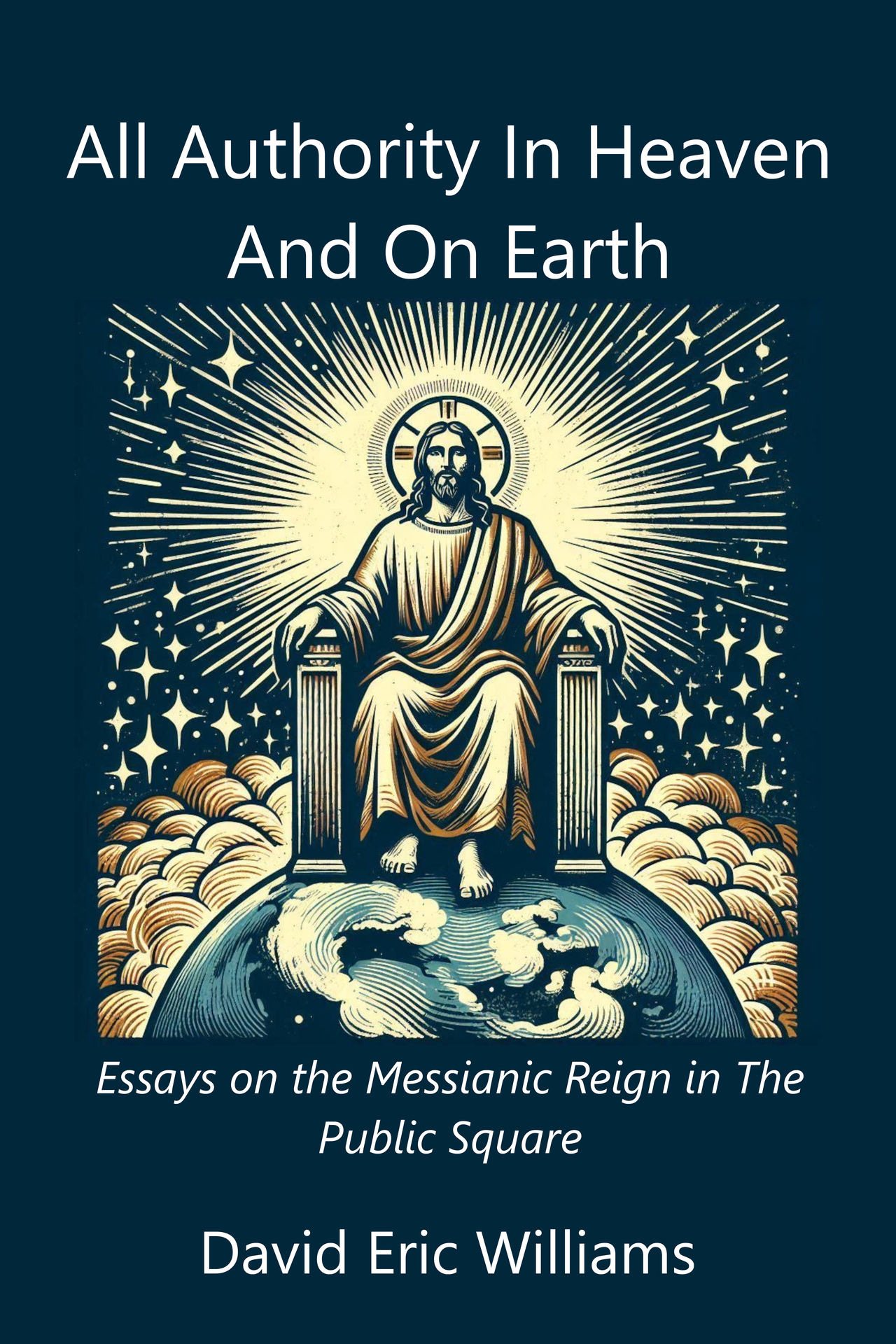The Healing Of The Centurion's Servant: An Affirmation Of Homosexuality?
© 05.27.19 By David Eric Williams
 It has often been said that the three primary rules of biblical interpretation are, context, context, context. Indeed, it is not too much to say that one must begin with the context of the entire Scripture, examine the context of the particular testament under consideration; the specific book context, passage and verse context and finally the use of the word in context.
It has often been said that the three primary rules of biblical interpretation are, context, context, context. Indeed, it is not too much to say that one must begin with the context of the entire Scripture, examine the context of the particular testament under consideration; the specific book context, passage and verse context and finally the use of the word in context.
The following paragraphs will examine the meaning of the Greek word pais as it appears in the account of the Centurion who sought a healing for his pais or, "young servant."1 Beginning with the context of the entire Scripture this examination will consider the Old Testament, the New Testament, and the Gospels before considering the passage, verse and word - all in context. As a result, the claim that Jesus condoned homosexual behavior in this event will be shown as unfounded.
The Bible
As Michael Brown has said, "the Bible is a heterosexual book."2 In other words, there is nothing in the entirety of Scripture suggesting a tolerance for homosexual behavior in the mind or character of God. Indeed, as Brown has said all of the approved sexual relationships accounted in the Bible are heterosexual.3
If homosexuality were an acceptable lifestyle it would be assumed this key truth would be readily recognizable in the Bible However, the Bible has not been interpreted in this way at any time in the history of the church. It is only in recent history that pro-homosexual claims have been made concerning God's word.
Old Testament: Leviticus
In the Old Testament there are two direct commands concerning homosexual behavior. Both are found in Leviticus: "Do not practice homosexuality, having sex with another man as with a woman. It is a detestable sin" (Leviticus 18:22) and "If a man practices homosexuality, having sex with another man as with a woman, both men have committed a detestable act. They must both be put to death, for they are guilty of a capital offense" (Leviticus 20:13). While there are other passages from the Old Testament speaking to the question of homosexual behavior, this paper will engage in a limited examination of just these two passages. Moreover, the question of whether or not homosexual behavior should be subject to capital punishment in a new covenant era is beyond the scope of this paper as well and will not be addressed.
It is sometimes said these verses only concern a prohibition against homosexual behavior as a religious practice. However, the context of the makes it clear they reflect God's standard of holiness for his people in any circumstance. At the beginning of Leviticus18 God told Moses to instruct the children of Israel that "I am the Lord your God. So do not act like the people in Egypt where you used to live, like the people of Canaan where I am taking you" (Leviticus 18:2-3). Thus, these prohibitions against homosexual behavior are simply part of the behavioral model presented to the children of Israel as a standard of right and wrong. This standard is reflected throughout the Old Testament whenever homosexual practice arises in the text.
New Testament: 1 Timothy and 1 Corinthians
The story is the same upon arriving at the new covenant documents. Throughout the New Testament account it is clear that God's law remains a valid standard of righteousness. For instance, in writing to Timothy the apostle Paul said, "The law is for people who are sexually immoral, or who practice homosexuality, or are slave traders, liars, promise breakers, or who do anything else that contradicts the wholesome teaching" (1 Timothy 1:10). The word translated as one who practices homosexuality is a arsenokoites and means "a male who engages in sexual activity with a person of his own sex, pederast, one who assumes the dominant role in same-sex activity."4 Again, in Paul's letter to the church in Corinth it says, "Do you not know that the unrighteous will not inherit the kingdom of God? Do not be deceived! The sexually immoral, idolaters, adulterers, passive homosexual partners, practicing homosexuals, thieves, the greedy, drunkards, the verbally abusive, and swindlers will not inherit the kingdom of God" (1 Corinthians 6:9-10, New English Translation). The word translated here as "passive homosexual partners" is a malakos and is defined as "pertaining to being passive in a same-sex relationship, effeminate especially of catamites, of men and boys who are sodomized by other males in such a relationship."5 In each case, it is clear that homosexual behavior of any kind is prohibited. This particular standard of righteousness is upheld throughout the New Testament (cf. Romans 1:26-27, Galatians 5:19).
Gospels
In the discourse commonly known as the "Sermon on the Mount" Jesus proclaimed he did not come to abolish the law of Moses or the writings of the prophets, but to accomplish their purpose. Indeed, Jesus said that "until heaven and earth disappear that even the smallest detail of God's law will disappear until his purpose is achieved" (Matthew 5:18). While the fullness of Jesus' meaning is beyond the scope of this treatment, it should be clear that the one thing Jesus did not do is negate God's standard of right and wrong. As has previously been considered, the Old Testament law clearly forbade homosexual behavior. Jesus essentially does the same in his affirmation of the abiding nature of God's law.
In the gospel of Mark, Jesus is found rebuking the religious leaders for their practical nullification of God's law through the insistence of obedience to their traditions (Mark 7:13). Here again, we find that Jesus is a proponent of obedience to the law of God.
Mark also relates the event of the man seeking eternal life who asked Jesus what he must do to guarantee salvation. It is noteworthy that part of the answer Jesus provided was an admonition to obey the law of God. While it is likely this was enjoined as an evidential lifestyle (a means of showing evidence of salvation), it remains pertinent to the discussion at hand; once again, Jesus is in full agreement with the law of God as a standard of righteousness.
Luke's gospel portrays Jesus as chiding the Pharisees for their love of money and admonishing them to seek the kingdom while upholding the Law of God (Luke 16:14-17). It is significant the example he chooses to illustrate his teaching is drawn from the law as found in Genesis when he says, "For example, a man who divorces his wife and marries someone else commits adultery. And anyone who marries a woman divorced from her husband commits adultery" (Luke 16:18). Genesis, one of the five books of Moses, was commonly considered part of the Law. Hence, Jesus draws from the Law concerning (heterosexual) marriage to highlight how it is important to uphold God's standard of morality even while seeking to live a life under the Lordship of Jesus Christ in the New Covenant age.
John's Gospel tells us the Word became human and dwelt among mankind. This Word of course is the eternal Son incarnate as Jesus the Christ. It is reasonable to say that the word who was with God and the word who was God having existed from the beginning with God would express God in the incarnation. As noted previously, Jesus Christ affirmed God's law as an abiding standard; this in keeping with his identity as the Word incarnate. Thus, throughout the gospel accounts Jesus is presented as one who upholds God's law in every detail.
The Passage
The specific verse under consideration is found in the account of the Centurion who requested Jesus heal his servant. This particular event is recorded by both Matthew and Luke (Matthew 8:5-13, Luke 7:2-10). In Luke's account, the Roman Centurion sends a delegation of respectable Jews to Jesus with his request rather than approach Jesus in person. In both accounts Jesus is shown to be amazed by the Centurion's understanding and faith. In both accounts Jesus is recorded as saying, "I tell you the truth, I have not found such faith in anyone in Israel!" (Matthew 8:10b, Luke 7:9b). It is certain both reports record the same event with Matthew "omitting material which he regards as inessential to the narrative."6 It is Matthew's rendering that is referenced by "Gay Christian expositors" as an affirmation of homosexual love by Jesus Christ.
In Matthew 8:6 it says, "Lord, my young servant lies in bed, paralyzed and in terrible pain." Matthew presents this simple statement as the Centurion's request of Jesus. Jesus responds by saying "I will come and heal him" (8:7b). It is in this simple exchange that the "Gay Christian" Bible teachers find the admission of a homosexual relationship by the Centurion and Jesus' avouchment of the relationship. Nevertheless, it is clear the passage concerns understanding and faith - even among the Gentiles. There is no indication Jesus is using the event to make a subtle affirmation of homosexuality.
The Word pais
According to the Liddell-Scott-Jones Lexicon of Classical Greek, pais has a range of meaning including, "boy, girl child, servant, adopted son, to be just out of childhood" and so on.7 This understanding of the word is reflected in theological dictionaries of the New Testament as well.8
In the 21 times pais appears in the New Testament, the Authorized Version translates it as: "child" (Mathew 17:18, Luke 2:43, 9:42, Acts 4:27, 30) "children" (Matthew 2:16, 21:15) "maiden" (Luke 8:51) "man" (Acts 20:12) "servant" (Matthew 8:6, 8, 13, 12:18, Luke 1:54, 69, 7:7, Acts 4:25) "servants" (Matthew 14:2) and "son" (John 4:51, Acts 3:13, 26).
If it were not for Luke's parallel account, the idea that the pa?? in this narrative refers to a young man fostered or adopted by the Centurion would not be outside the realm of possibility. It was not uncommon in Rome (especially wealthy or upper class Romans) to foster or purchase and then adopt a child in order to carry on the family name in the absence of natural born children.9 However, this is rendered less likely by the fact that in Luke's telling of the story the same person termed a pais in Luke 7:7 is called a doulos, slave, in 7:2. This indicates a typical master slave relationship between the Centurion and the servant.
In any case, the use of pais in the New Testament is consistent with the usual rendering and understanding. The young man in need of healing was no more than a servant/slave of the Roman officer. Indeed, no "Scholarly Greek lexicon recognizes a sexual meaning of pais in the Bible at all."10
Conclusion
Homosexual behavior is prohibited by Old Testament Law and in the use of the Law in the New Testament. Both Moses and the Apostle Paul condemn the behavior without equivocation. The gospels present Jesus as the Word made flesh and a consistent apologist for the Law of God. The passage cited by "gay Christians" as an affirmation of homosexual love by Jesus is actually an account of unexpected understanding and faith on the part of a Gentile. Finally, the word, pais has a range of meaning and taken in context most likely means "young servant" with no sexual connotations. Therefore, the use of Matthew 8:6-7 to bolster the claim of the gay lobby that Jesus condoned homosexual behavior is unfounded.
________________________________________
1. All Scripture quotations will be taken from the New Living Translation unless otherwise noted.
2. Michael L. Brown, Can You Be Gay and Christian? Responding with Loveand Truth to Questions about Homosexuality, (Lake Mary FL: FrontLine, 2014), 82.
3. Brown, 87.
4. New English Translation Notes as found in, Rick Meyers, (2003-2017), e-Sword (version 11.1.0) [software], retrieved from https://www.e-sword.net/, on 1 Timothy 1:10.
5. New English Translation Notes, 1 Corinthians 6:9.
6. R. T. France, The Gospel of Matthew, The New International Commentary on the New Testament., ed., Gordon D. Fee (Grand Rapids: William B. Eerdmans Publishing Company, 2007), 309-310.
7. Liddell-Scott-Jones Lexicon of Classical Greek as found in Costas Stergiou, (2003-2015), theWord (version 5.0.0.1450) [software], retrieved from https://www.theWord.net/
8. Gerhard Kittel and Gerhard Friedrich, eds., Theological Dictionary of the New Testament, trans. Geoffrey William Bromiley, vol. 5, 10 vols. (Grand Rapids: William B. Eerdmans Publishing Company, 1999), 637-654.
9. Beryl Rawson, "Children in the Roman Familia," The Family in Ancient Rome: New Perspectives, ed. Beryl Rawson (Ithaca: Cornell University Press, 1992), 196.
10. Brown, 152.
Entire Site Copyright © 2025 By David Eric Williams










